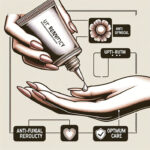Black Toenail: When Should You Be Concerned?

Black Toenail: When Should You Worry?
So, What Exactly Is a Black Toenail?
Breaking Down the Look and Feel of a Black Toenail
Ever notice your toenail turning a shade darker unexpectedly? That’s what we’re calling a black toenail. It usually shows up as a unique dark spot—sometimes just a hint of a shadow or even a full-on black patch. This typically happens when blood pools under the nail or when discoloration sets in for some other reason. While it’s not automatically a sign of a serious problem, it’s your body’s way of waving a little flag that something might be off. Most folks stumble upon the darkened nail either after a painful stub or while tidying up. If you take a closer look, you might spot jagged lines or tiny specks that break away from your nail’s usual color. Essentially, it stands out because it’s not what you’re used to seeing on your healthy toes.
What’s Behind the Black Toenail?
There are a few reasons why your toenail might turn black. For starters, bumping or injuring your toe—even something seemingly minor—can cause bleeding right under your nail. And then there are cases where no trauma is involved at all; infections or underlying health issues sometimes lead to discoloration as well. For instance, a pesky fungal infection can change the pigmentation of your nail subtly, while certain medications or conditions like diabetes might indirectly contribute to the problem by affecting your nail’s overall health. Most times, these black toenails clear up on their own, but figuring out what’s causing that dark patch is key in deciding if you need to take further steps.
When Should You Get Concerned?
Sure, a few cases of a black toenail are harmless. But if you start noticing pain, swelling, or a change in the texture of your nail along with that dark spot, it’s probably a good idea to check in with a doctor. This is especially true if the discoloration sticks around, follows a noticeable injury, or appears to be spreading. Infections can sometimes be part of the picture, too, so keeping an eye on the nail’s development is smart—distinguishing between a simple bruise and a more worrisome issue is crucial.
Digging Into the Causes: Trauma and Other Health Factors
How Injury Gets Your Toenail Black
One of the biggest culprits? Good old physical trauma. Whether you’ve had a heavy object drop on your foot or you’re squeezing your toes into shoes that are too tight, that impact can lead to blood pooling under your nail. This usually comes with some tenderness and maybe a little swelling. The bright side is that in most cases, your body will eventually reabsorb the blood and the nail will return to normal. However, if the pain lingers or the discoloration doesn’t fade away, it might be worth getting a checkup to make sure there isn’t something more serious happening like a fracture.
When Fungi and Bacteria Take Over
Sometimes the culprit isn’t an injury at all, but an infection—most commonly from fungi. A fungal invasion can begin with a subtle discoloration that eventually grows more pronounced, especially as the nail bed weakens over time. Bacterial infections can also cause similar darkening, tricking you into thinking it’s just a bruise. It’s important to catch these infections early, because untreated, they can spread into the surrounding skin. Keeping your nails clean and dry is a great first defense, and if you suspect an infection, don’t hesitate to get it checked out.
Medication, Health Conditions, and Their Effects
Sometimes it’s not about an injury or infection at all. Certain medications—think blood thinners, for example—can make you prone to bleeding even after a slight bump, which shows up as discoloration. Likewise, chronic conditions like diabetes or circulatory issues can gradually affect the health of your nails, leading not only to color changes but also to shifts in texture. If you notice unexpected changes in your nail when you start a new medication, it’s a good idea to discuss it with your doctor to figure out whether it’s something benign or something more concerning.
Spotting the Warning Signs: Is Your Black Toenail a Red Flag?
When a Darkened Nail Might Signal Trouble
Regularly taking a peek at your toenails can reveal early signs of trouble, including a mysteriously darkened nail. A problematic black toenail isn’t always a uniform patch of color—it might show uneven borders, irregular shapes, or even a pattern that shifts over time. If that dark patch starts bleeding into the surrounding skin, or if you notice that the nail is getting thicker, it might be a sign that your body is responding to injury or infection. Catching these signals early can make it easier to decide when a healthcare visit is in order.
Other Clues That Something’s Up
It’s not just the color; pay attention to other symptoms too. If you’re feeling pain when you walk, your toe seems puffy, or the nail even starts to lift slightly, these could be red flags that something is amiss. Sometimes you might notice an odd odor or even crusting around the nail. Taken together with the darkened appearance, these signs might point to an infection or another underlying problem. Keeping an eye on these cues can help you take timely action to safeguard your overall foot health.
When to Really Be Concerned: Understanding the Big Picture
Who Needs to Be Extra Cautious?
Some folks are more susceptible to problematic black toenails than others. If you have diabetes, for instance, changes in your blood flow can make your nails more vulnerable. Older adults, too, might find that aging nails become less resilient, increasing the risk of discoloration. And if your immune system is compromised or you’re managing chronic health issues, you might find that infections set in a bit more easily. Knowing your own risk factors can be a game-changer, helping you decide when to act and consult with a professional before things escalate further.
Why Sudden Nail Changes Shouldn’t Be Ignored
Keep your eyes peeled for any sudden shifts in your nail’s appearance. If a nail that’s usually healthy suddenly turns dark or starts showing signs like thickening, cracking, or lifting away from the nail bed, it could be a sign that something is off beneath the surface. Whether it’s an acute injury, a fast-spreading infection, or even an underlying health issue, these rapid changes are like little alarms telling you to get it checked out sooner rather than later. When your nail changes quicker than expected, it’s best to contact your healthcare provider promptly.
Risk of Infection and Other Complications
Let’s not forget that, left unchecked, a black toenail can sometimes pave the way for further complications. Damaged tissue is a prime playground for bacteria and fungi, which means an unattended nail could lead to a more serious infection that might spread to nearby skin. If you start to notice redness, heat, or even a bit of discharge around your nail, these are warning signs that you need medical help. Early intervention here not only manages the current condition but also helps ward off potential long-term issues that could impact your daily life.
What to Expect When Getting It Checked Out
Your Doctor’s Approach to Examining a Black Toenail
When you finally decide to see a doctor about a black toenail, you can expect a thorough look at both the nail itself and any symptoms you’ve got. The doctor will likely observe your toe closely, maybe press gently around the area to check for tenderness or warmth, and ask about any injuries or changes in your health. Because our nails can reveal so much about our overall well-being, this initial examination is a key step toward figuring out if your black toenail is due to a simple injury or something more systemic. Your medical history will also play a significant role, ensuring that nothing is overlooked.
Tests and Procedures That Might Be Ordered
Depending on what your doctor finds during the initial exam, you might need to undergo a few tests. These could include X-rays to rule out any hidden fractures or lab tests to check for fungal or bacterial infections. Sometimes, they might even take a small sample of your nail for culture, or perform a biopsy if there’s concern about more serious issues. By combining visual checks with imaging and lab work, your healthcare provider can nail down a precise diagnosis, making it easier to plot out the best course of action.
How to Treat a Black Toenail: From DIY Fixes to Professional Help
Simple at-Home Tips for Managing a Black Toenail
If your black toenail is the result of a minor bump, you may not need more than some good old-fashioned home care. Rest up, ice the affected area, and keep your foot elevated to reduce swelling. It also helps to keep the nail clean and dry to avoid any infections. Over-the-counter pain relief can ease discomfort too. And don’t forget: trimming your nails regularly and opting for shoes with a bit more room can prevent further aggravation. Just keep an eye on it—if things worsen or new symptoms pop up, it’s best to call in a professional.
When It’s Time to See a Specialist
If home remedies aren’t doing the trick or if the situation gets more complicated, a trip to a dermatologist or podiatrist might be in order. In the clinic, the expert might suggest procedures like debridement (removing the damaged nail) or even laser therapy if that discoloration is stubborn. They may also recommend medication—topical or oral—to tackle any underlying infections or issues. Professional treatment is especially important if you’re experiencing spreading infection, persistent pain, or if the condition is seriously impacting your daily routine.
Keeping Your Nails Healthy After Treatment
Once you’ve worked with a healthcare provider to sort things out, follow-up care is just as important for keeping future problems at bay. Your doctor might share tips on how to care for your nails long-term—think regular cleaning, proper nail trimming, and choosing shoes that provide enough room for your toes. A quick follow-up visit can also ensure everything is healing as expected. With a little extra attention and some simple lifestyle tweaks, you can greatly reduce the risk of ending up with another black toenail down the road.
Prevention: Keeping Your Toenails in Tip-Top Shape
Essential Lifestyle Tweaks to Protect Your Nails
Preventing black toenails before they even happen is all about making smart choices every day. Well-fitting shoes, regular nail grooming, and keeping your feet clean and dry can go a long way. Bonus points for incorporating foot exercises into your routine—better circulation means healthier nails! And if you’re involved in activities where your toes take a beating, a little extra protection can make all the difference. Packing your diet with plenty of vitamins and minerals is another handy tip to keep your nails strong and resilient.
Routine Tips to Avoid Future Black Toenail Headaches
Want to reduce your chances of ending up with a stubborn black toenail? Try a multi-pronged approach: stick to good hygiene practices, self-check your nails now and then, and always treat any little injury right away. Comfort and protection in your footwear are key—ensure your shoes don’t put undue pressure on your toes. And remember, if you notice recurring issues, chatting with your healthcare provider can help you fine-tune a personal care plan that fits your needs. These proactive measures not only prevent discoloration but also support overall foot health, boosting your quality of life.
Final Thoughts: Taking Charge of Your Toenail Health
Wrapping Up the Essentials
At the end of the day, a black toenail is like a little signal from your body—it could be nothing more than a bruise from a bump, or it might hint at something needing extra attention. Knowing what to look out for, understanding its possible causes, and being aware of potential complications are your first steps in tackling this issue head-on. Whether it’s trauma, an infection, medication side-effects, or another health condition, early recognition and proper care can save you a lot of hassle later down the road. Being in tune with your body is key, especially if you fall into a higher-risk category.
When to Reach Out for Professional Help
While many black toenails can be managed at home with some sensible care and lifestyle tweaks, there comes a point when a professional’s opinion becomes essential. If you’re dealing with persistent pain, rapid changes, or signs of an infection, don’t hesitate to get expert advice. A timely consult with a dermatologist or podiatrist can help pinpoint the exact issue and set you on the right path to recovery. Trust your gut—if something seems off, getting it checked out early can prevent bigger problems later. Remember, your nails are more than just a pretty detail; they offer a peek into your overall health, so keeping them in good shape is always a smart move.
In short, being well-informed and proactive about your nail health is a powerful tool in maintaining your overall well-being. From practical prevention tips to knowing when to seek help, taking action now can pave the way for healthier nails and a more active, comfortable life.





